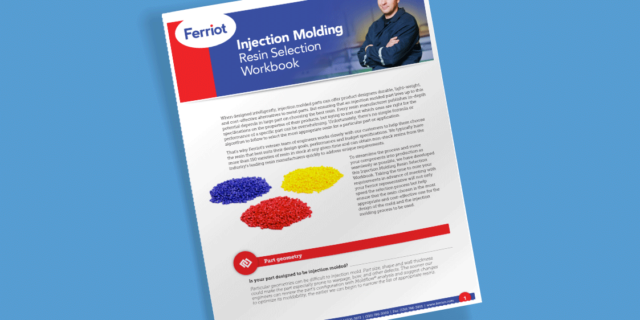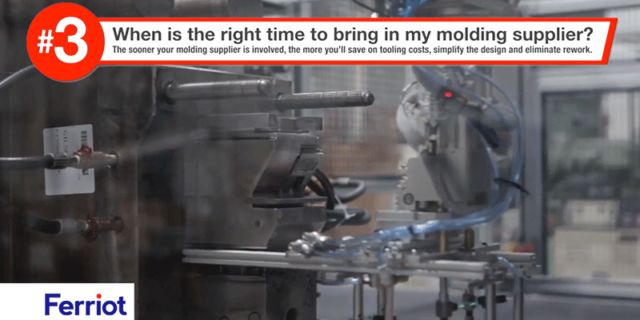The Tips, Tricks, and Traps of Injection Molding Resin Selection
Tip: Take the time to educate yourself about the characteristics of the different types and grades of thermoplastic resins available. Thermoplastic resins come in two basic classes: engineering grade resins and commodity resins. Each category includes a variety of resins, which provides flexibility to match a resin to a part based upon application, part design and moldability.
Engineering Grade Resins
- Nylon: Tough, superior thermal and chemical resistance, plus a wide variety of grades available with broad scope of physical properties.
- Polycarbonate: Strong, high flex modulus, good temperature range, transparent for lenses and multiple colors.
- ABS: Good impact strength, superior surface quality, good colorability, good rigidity, with electroplatable grades available.
- PC/ABS: Good processability, toughness at low temperature, superior dimensional stability.
- TPE: “Soft” touch, rubber replacement materials, good tear strength and good flexibility.
- Acrylic: Transparent, good for some outdoor applications.
- Acetal: Excellent wear resistance, great for gears and high wear applications.
- Structural Foam: Excellent material to be used in where metal replacement is considered. Good weight-to-stiffness ratio.
Commodities Grades
- Polypropylene: Versatile material, variety of grades in homopolymer and copolymer classes, good fatigue resistance, excellent chemical resistance, lower cost.
- Polyethylene: Very versatile, low-cost material, variety of grades in linear low-density polyethylene (LLDPE), low-density polyethylene (LDPE) and high-density polyethylene (HDPE), tough, weatherable, and easily processed.
- Polystyrene (PS): Available in general purpose and high impact (HIP) polystyrene, lower cost, range of impact from low to high, good clarity in general purpose (GPPS) grades, good rigidity.
- Polyvinyl chloride (PVC): Low cost, chemical resistant, can be colored, weatherable, and naturally flame retardant.
Injection Molding Resin Selection Workbook
When designed intelligently, injection molded parts can offer product designers durable, light-weight, and cost-effective alternatives to metal parts. But ensuring that an injection molded part lives up to this potential depends in large part on choosing the best resin. This workbook details different part characteristics and how they influence your resin choice.
Ferriot Injection Molding Checklist
Watch the Injection Molded Checklist video for the 10 questions every designer should ask before beginning an injection molding project.
Transforming Injection Molding Vendors into Injection Molding Partners
Increasingly, design engineers and their employers are looking for vendors that they can partner with over the long term for help with issues like part design/optimization, tooling modifications or simplification, resin selection, cost containment, just-in-time delivery, and special finishes to name but a few.




